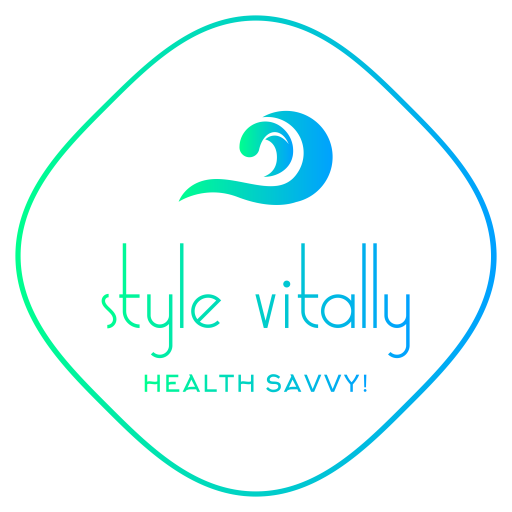Introduction
Korean cuisine boasts a rich tapestry of flavors and textures, with Kimbap being a beloved staple in its culinary repertoire. Rice, veggies, and proteins are traditionally wrapped firmly in seaweed sheets to make Kimbap. However, as dietary habits change and people become more health conscious, Keto Kimbap is a novel take on this traditional meal.
Keto Kimbap is a low-carb version that appeals to people who want to reduce their carbohydrate intake while still enjoying Korea’s authentic flavors. It is based on the ketogenic diet. Keto Kimbap is a filling option for people following a ketogenic diet or trying to cut back on carbohydrates without sacrificing flavor or authenticity. It does this by swapping out high-carb components with keto-friendly ones, like egg wraps or cauliflower rice.
Keto Kimbap offers a tasty voyage that embodies the harmonic fusion of tradition and contemporary dietary trends for those experimenting with the marriage of Korean food and a low-carb lifestyle. The upcoming sections will explore Kimbap’s history, analyze the ketogenic diet’s fundamentals, and demonstrate how to make Keto Kimbap using creative recipes and insightful nutritional analysis. Come along on a culinary journey that embraces the pursuit of healthy eating habits while honoring the variety of flavors.
Deconstructing the Traditional Recipe

Examining the traditional recipe for Kimbap reveals a delicious combination of flavors and textures deeply ingrained in Korean cuisine. This popular meal usually consists of rice seasoned with salt and sesame oil, coupled with various vibrant vegetables, including carrots, spinach, and pickled radish, as well as protein sources like ham, egg strips, or crab pieces.
Kimbap, a snack or lunch choice enjoyed by people of all ages, is a portable and convenient food item wrapped in seaweed sheets. However, because traditional Kimbap is made mainly with rice, it naturally contains a lot of carbohydrates, which can be problematic for people on low-carb or ketogenic diets.
Innovative recipes have arisen to make this classic dish keto-friendly by substituting low-carb ingredients for high-carb ones without sacrificing authenticity or taste. Keto Kimbap provides an inventive alternative to traditional rice by using cauliflower rice or egg wraps instead of seaweed sheets for those who want to enjoy Korean food without sacrificing their dietary restrictions. In addition to lowering the amount of carbohydrates in the original dish, these keto-friendly modifications give it a distinctive touch that meets contemporary food enthusiasts—changing demands and preferences.
Adding Keto Kimbap to one’s culinary arsenal allows you to try different flavors and cutting-edge cooking methods. People can have the best of both worlds—the health-conscious tenets of the ketogenic diet and the rich cultural legacy of Korean cuisine—by dissecting the classic Kimbap recipe and rethinking it through a low-carb lens. Keto Kimbap is a tasty and adaptable solution for individuals who want to improve their culinary experience without sacrificing their nutritional objectives, whether eating it as a filling meal or a delicious snack.
The Rise of Keto Kimbap

The ketogenic diet, also known as the “Keto diet,” has become extremely well-liked as a nutritional strategy to encourage weight loss and enhance general health in recent years. The Keto diet strongly emphasizes eating meals high in protein and fat and limiting carbohydrates. When this happens, the body goes into a state known as ketosis, where it starts burning fat for energy rather than carbs. Following these guidelines, Keto Kimbap has become popular as a low-carb version of the classic Korean dish, providing those on the Keto diet with a tasty option to sate their desires without exceeding their allotted food allowance.
Keto Kimbap is a creative variation of the traditional Kimbap dish that meets the needs of people watching their carb intake while maintaining taste and nutrition. With egg wraps in place of seaweed sheets and cauliflower rice in place of rice, Keto Kimbap provides a novel way to follow the Keto diet while still savoring the unique flavor of Korean cooking. In addition, the inclusion of nutrient-dense veggies and sources of protein guarantees that Keto Kimbap continues to be a tasty and well-balanced meal choice for people who prioritize their wellness and health.
Beyond only being reduced in carbohydrates, Keto Kimbap has many advantages for people on a ketogenic diet. It not only offers a quick and portable snack or lunch choice, but it also provides vital nutrients and encourages feelings of fullness, assisting people in sticking to their dietary goals. Additionally, Keto Kimbap promotes creativity and experimentation in the kitchen, encouraging people to think of novel ways to incorporate low-carb items into their favorite recipes. For individuals adopting the Keto diet, Keto Kimbap stands out as a tasty and adaptable option as the need for Keto-friendly options rises.
The Healthy Twist: Keto Kimbap Recipe

Keto Kimbap
Ingredients
- 1 head of cauliflower riced
- 4 sheets of roasted seaweed
- 1 avocado sliced
- 4 oz. of smoked salmon sliced
- 4 oz. of cooked shrimp peeled
- 4 oz. of cream cheese
- 4 tsp of toasted sesame oil
- 2 tbsp of tamari sauce
- 2 tbsp of rice vinegar
- 1 tsp of Swerve sweetener
- 1 tsp of salt
- 1 tsp of black pepper
Instructions
- Cut the cauliflower head into florets and pulse them in a food processor until they reach the texture of rice.
- In a bowl, mix the cauliflower rice with 2 tsp of sesame oil, tamari sauce, rice vinegar, Swerve sweetener, salt, and black pepper.
- Place a sheet of roasted seaweed on a bamboo mat, shiny side down.
- Spread a layer of the cauliflower rice mixture onto the seaweed, leaving a 1-inch border at the top.
- Add a layer of cream cheese, sliced avocado, smoked salmon, and cooked shrimp to the cauliflower rice.
- Use the bamboo mat to roll up the seaweed tightly.
- Cut the roll into eight pieces with a sharp knife.
- Repeat with the remaining ingredients until all the rolls are done.
- Drizzle the remaining 2 tsp of sesame oil on top of the rolls.
- Serve immediately or store in the refrigerator for up to 2 days.
Notes
This Keto Kimbap recipe offers a healthier twist on the classic Korean dish, utilizing cauliflower rice and low-carb ingredients. To begin, rice one head of cauliflower in a food processor until achieving a rice-like texture. Other essential ingredients include roasted seaweed sheets, sliced avocado, smoked salmon, cooked shrimp, cream cheese, toasted sesame oil, tamari sauce, rice vinegar, Swerve sweetener, salt, and black pepper.
For preparation, combine the cauliflower rice with sesame oil, tamari sauce, rice vinegar, Swerve sweetener, salt, and black pepper. Spread this mixture onto a sheet of roasted seaweed on a bamboo mat, leaving a 1-inch border—layer on cream cheese, avocado, salmon, and shrimp. Roll tightly using the bamboo mat, then slice into eight pieces. Drizzle with sesame oil before serving.
Nutritionally, each serving of this Keto Kimbap contains 225 calories. Ideal for those adhering to a keto or low-carb diet, this recipe is rich in protein healthy fats, and low in carbs. Enhance the filling with low-carb ingredients like cucumber, radish, or cooked egg for added flavor and nutrients. Use a sharp knife for clean slicing, and enjoy immediately or refrigerate for up to 2 days.
Exploring Flavor Variations
Keto Kimbap provides a flexible platform for gastronomic exploration, enabling users to tailor their content to nutritional requirements and taste preferences. While vegetables, eggs, and crab sticks are common ingredients in traditional Kimbap, Keto Kimbap offers a new range of low-carb options. For extra protein and omega-3 fatty acids, add seafood, like tuna or smoked salmon. Another great option is avocado, which adds wholesome fats and a creamy texture to balance the dish’s salty characteristics. Furthermore, pickled veggies like cucumber or radish can give every bite a crisp, tart flavor. The secret is to use your imagination and try various taste combos to get the ideal Keto Kimbap version that appeals to you.
The core of Keto Kimbap is experimentation, which enables customers to customize their rolls to meet specific nutritional requirements and taste preferences. Feel free to use unusual ingredients or flavor combinations and to think beyond the box. For a plant-based protein option, add marinated tofu or spicy kimchi for a burst of heat. Additionally, you can experiment with different sauces and seasonings to improve the flavor of your Keto Kimbap. There’s a Keto Kimbap version out there just waiting to be found; whether you’re a seafood lover, a fan of spicy flavors, or someone who enjoys experimenting with new ingredients, there’s a Keto Kimbap variation waiting to be discovered.
To sum up, Keto Kimbap provides a tasty and adaptable substitute for regular Kimbap, enabling people to savor the tastes of this well-liked Korean meal while maintaining a low-carb diet. You can make a delicious and healthy Keto kimbap by experimenting with different fillings and taste combinations. Keto Kimbap is guaranteed to tantalize your taste senses and have you returning for more, regardless of whether you’re searching for a quick and simple supper or an inventive culinary effort. So why plan a gastronomic trip to find the ideal Keto Kimbap combo?
Nutritional Benefits of Keto Kimbap
There are some noticeable variations between the nutritional profiles of the regular Kimbap and its ketogenic equivalent, primarily related to the amount of carbohydrates. Because rice is usually used to make traditional Kimbap, it has more carbohydrates. On the other hand, Keto Kimbap considerably lowers the carbohydrate level while raising the fat content by replacing rice with low-carb replacements like cauliflower rice or egg wraps. This change in the macronutrient makeup is consistent with the low-carb, high-fat nature of the ketogenic diet, which aims to put the body into a state of ketosis.
In addition to being appropriate for people on a ketogenic diet, Keto Kimbap’s lower carbohydrate content may have additional health advantages beyond helping with weight loss. Keto Kimbap may help regulate blood sugar levels, improve insulin sensitivity, and increase satiety by consuming more fat and less carbs. Furthermore, the more excellent fat content is a source of long-lasting energy that promotes general well-being and cognitive performance. Keto Kimbap is a good choice for people who want to maximize their diet for health and performance because of these nutritional advantages.
To sum up, Keto Kimbap provides a nutrient-dense substitute for regular Kimbap, with a higher fat content and a lower carbohydrate content that is in line with the ideas of the ketogenic diet. Keto Kimbap is a tasty and filling lunch alternative that supports metabolic health and general well-being by combining low-carb foods and emphasizing healthy fats. Keto Kimbap is a delicious way to keep your nutritional goals while savoring the flavors of Korean cuisine, whether you’re on a ketogenic diet or just trying to cut back on carbs.
Incorporating Keto Kimbap into Your Diet
A tasty approach to enjoying Korean food while following a low-carb, high-fat diet is to include Keto Kimbap. Meal planning might benefit from having Keto Kimbap by serving it alongside keto-friendly foods like salads or grilled meats. This combination guarantees a balanced intake of macronutrients while bringing diversity to your meals. Keto Kimbap is also a tasty and portable solution for people who are always on the go or for social occasions as a party appetizer or snack. Because of its small size and adaptability, it can be used for various situations and lets you enjoy your favorite flavors without going overboard with your diet.
Even within a ketogenic framework, moderation and balance are key when including Keto Kimbap into your diet. Although Keto Kimbap is a tasty and filling substitute for regular Kimbap, it must be combined with a range of nutrient-dense foods to guarantee sufficient consumption of micronutrients. Along with Keto Kimbap, adding leafy greens, non-starchy veggies, and healthy fats will help you maximize your nutritional status and promote long-term health and well-being. You can reap the benefits of Keto Kimbap while sticking to a long-term, balanced ketogenic diet plan by learning to live in moderation and balance.
To sum up, Keto Kimbap offers a delicious and adaptable choice for people on a ketogenic diet or trying to reduce their carb intake. Keto Kimbap is a tasty way to indulge in Korean food while adhering to your diet objectives, whether eaten as a handy snack or as part of a well-balanced meal. You may take advantage of the rich flavors and textures of Keto Kimbap while still experiencing the nutritional benefits of this low-carb substitute by including it in your meal plans in a balanced and moderate manner.
FAQ about Kimbap
Q: What is the difference between Kimbap and gimbap?
A: While “kimbap” and “gimbap” are often used interchangeably, some subtle differences exist. Historically, “gimbap” refers to seaweed rolls made with seasoned rice, various fillings, and seaweed. At the same time, “kimbap” typically denotes a dish originating in Korea and encompassing a broader range of ingredients and flavors. However, the terms are often synonymous in modern usage, with “gimbap” being more commonly used outside Korea.
Q: Is Kimbap diet-friendly?
A: Kimbap can be diet-friendly by incorporating low-carb alternatives such as cauliflower rice or omitting ingredients. Additionally, lean protein sources and plenty of vegetables can make Kimbap suitable for those following specific dietary plans, such as keto or low-carb diets.
Q: How many calories are in Kimbap?
A: The number of calories in Kimbap can vary depending on its ingredients and portion size. On average, a single roll of Kimbap typically contains around 300 to 400 calories. However, this can fluctuate based on the rice type, filling amount, and additional sauces or condiments.
Q: Is Kimbap and sushi the same?
A: While kimbap and sushi share similarities in their presentation as rice rolls, they differ in ingredients, flavor profiles, and cultural origins. Kimbap is a Korean dish that traditionally contains cooked ingredients such as vegetables, eggs, and meat rolled in rice and seaweed. On the other hand, sushi is a Japanese dish consisting of vinegared rice paired with raw or cooked seafood, often served with soy sauce, wasabi, and pickled ginger.
Q: Is Korean Kimbap healthy?
A: Korean Kimbap can be a healthy option with nutritious ingredients such as vegetables, lean proteins, and whole grains. However, the healthiness of Kimbap depends on its preparation method and ingredient choices. Opting for brown rice instead of white rice, incorporating a variety of colorful vegetables, and controlling portion sizes can enhance the nutritional value of Kimbap.
Q: Is bibimbap the same as kimbap?
A: While both bibimbap and Kimbap are Korean dishes, they differ significantly in preparation, ingredients, and presentation. Bibimbap consists of a bowl of rice topped with various seasoned vegetables, meat, a fried egg, and spicy gochujang sauce. In contrast, Kimbap involves rolling rice and multiple fillings in seaweed sheets to create cylindrical rolls sliced into bite-sized pieces.
Q: Why is Kimbap healthy?
A: Kimbap can be considered healthy due to its inclusion of nutrient-rich ingredients such as vegetables, lean proteins, and whole grains. The vegetables and proteins used in Kimbap provide essential vitamins, minerals, and dietary fiber, while the seaweed wrapper adds beneficial nutrients such as iodine and omega-3 fatty acids.
Q: Which is older, Kimbap or sushi?
A: While Kimbap and sushi have ancient origins, sushi is generally believed to be older, with its roots dating back to ancient Japan around the 8th century. Kimbap, on the other hand, is thought to have originated in Korea during the late 19th century, influenced by Japanese sushi-making techniques introduced during the Japanese occupation of Korea.
Q: Is Kimbap Korean or Japanese?
A: Kimbap is a traditional Korean dish from Korea and is deeply ingrained in Korean cuisine and culture. Although it shares similarities with Japanese sushi rolls, Kimbap has unique ingredients, flavors, and preparation methods that distinguish it as a distinct Korean dish.
Q: Is onigiri and kimbap the same?
A: Onigiri and Kimbap are similar in that they both involve rice and a filling but are distinct dishes from different culinary traditions. Onigiri is a Japanese dish consisting of rice formed into triangular or cylindrical shapes and often filled with ingredients like fish, pickled plum, or seaweed. In contrast, Kimbap is a Korean dish featuring rice and various fillings rolled in seaweed sheets.
Conclusion
Finally, for those who want to enjoy traditional Korean cuisine while following low-carb dietary recommendations, Keto Kimbap is a versatile and fulfilling dish that delivers a delightful synthesis of Korean flavors and the principles of the ketogenic diet. Keto Kimbap is a tasty and nutritious substitute for regular rice-based rolls, focusing on low-carb components like cauliflower rice and lean meats. Keto Kimbap is a filling dinner or snack choice because it incorporates healthy fats from ingredients like avocado and sesame oil, which give richness and fullness to every bite.
I invite readers to experiment with different flavor combinations and ingredient combinations at home to learn more about the world of Keto Kimbap. You may be as creative and customized as you like, and you can accommodate different dietary requirements and tastes by experimenting with various fillings, sauces, and spice combinations. Enjoyed as a quick grab-and-go snack, a hearty dinner, or a light lunch, Keto Kimbap is a simple way to add flavors inspired by Korea to your ketogenic diet.
In conclusion, Keto Kimbap’s presentation of the fusion of Korean and ketogenic cuisines exemplifies a tasteful blending of history and innovation. Keto Kimbap invites enthusiasts to explore new flavors, textures, and cooking methods while emphasizing health and well-being. It does this by embracing the fundamental ideas of both culinary traditions. Thus, why take a gastronomic trip right now and discover the delectable harmony of Keto Kimbap for yourself?
Was this helpful?

Joseph Emb, RDN
Founder of StyleVitally.com | Registered Dietitian & Wellness Advocate
What I Cover:
I’m passionate about connecting nutrition science and everyday wellness to help people live healthier, more vibrant lives. I write about evidence-based nutrition, mindful eating, sustainable lifestyles, and holistic well-being at StyleVitally.com.
My Background:
The University of Texas in Austin, where I earned my Dietetics diploma, laid the groundwork for my nutrition and health career. My training and hands-on experience taught me the science and art of using nutrition to enhance health and well-being.
Professional Journey:
I’m an RDN with lots of experience. I’ve helped people seeking tailored nutritional recommendations in clinical settings and community outreach programs. My constant learning and professional development ensure that my recommendations are always based on the latest evidence.
Ethical Commitment:
My practice prioritizes integrity. My content is transparent and objective, following the most significant ethical standards. I can give my audience unbiased advice because I’m not affiliated with food businesses or industry associations. I want to help people make informed health decisions that match their values and ambitions.
Join Me on the Wellness Journey:
Join me on the path to vitality and well-being, whether facing nutritional issues, seeking sustainable lifestyle changes, or simply wanting a better, happier you. We’ll discover how diet, mindfulness, and holistic well-being can maximize your potential.









